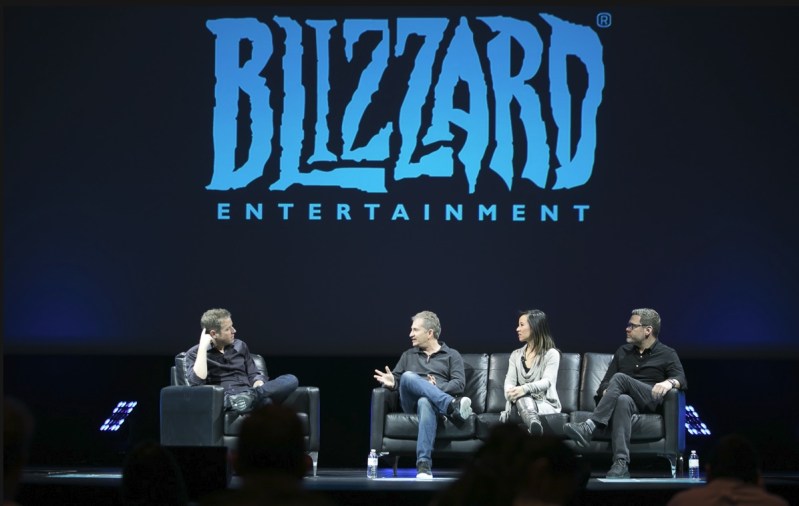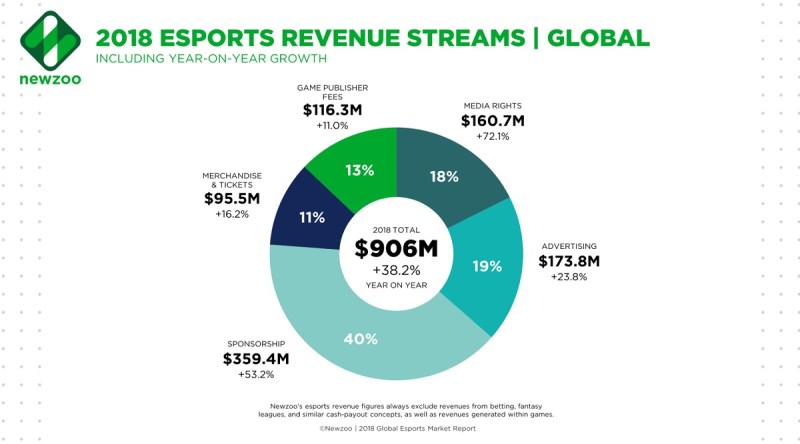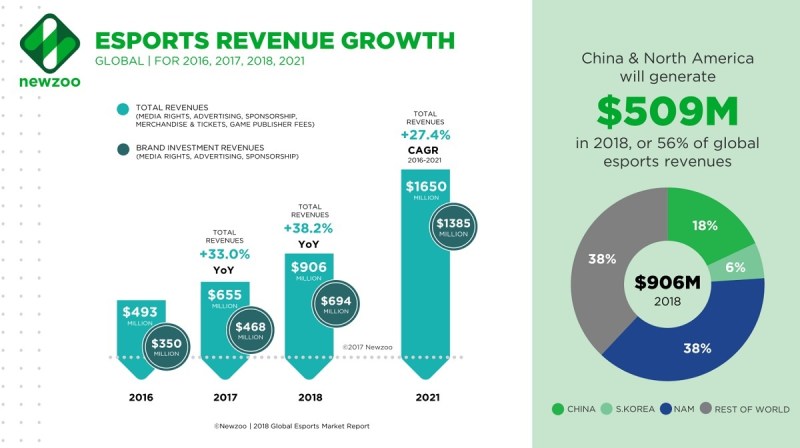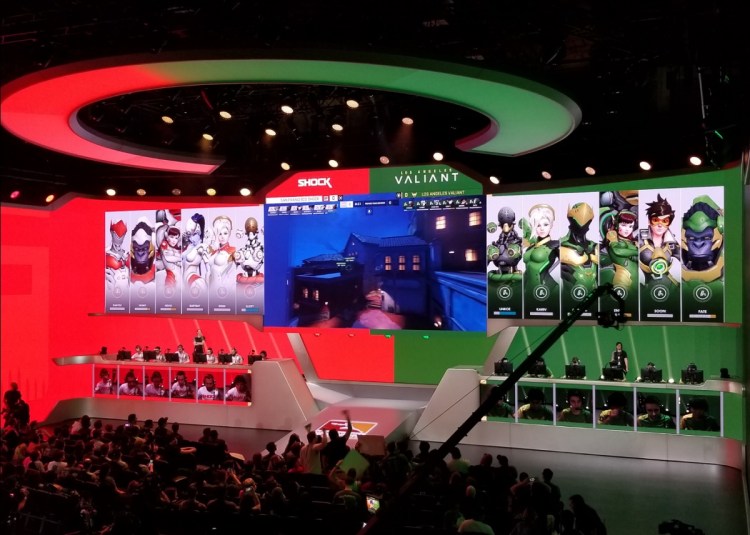GamesBeat: Is there more possible intersection between design for spectating and design for multiplayer gameplay?
Phan: You see that today. It’s two different audiences that are watching, too. There’s the audience that plays the game, that wants to watch all of that fast action. Someone else who plays the game might not understand what they want to see. They appreciate the skill and the fast movement of a pro player, which for someone who doesn’t play might be super confusing. But we do elements of different views in the game — like when the broadcast pulls out and shows the entire game or when they take a step back, and you see the fighting happen. There’s a mix of balancing it, so it’s fun to watch for a player who’s trying to learn and improve and also for someone who’s new to the game.
GamesBeat: My wife’s experience with the [Golden State] Warriors is interesting. She was never a basketball fan until their championship runs recently, and now, she watches every game. She was transformed into a fan at some point. Different things made it more accessible — having a star like Stephen Curry who’s fun to watch.
Morhaime: There’s something to the transcendent star theory. The NBA really took off behind Magic [Johnson] and [Larry] Bird.
June 5th: The AI Audit in NYC
Join us next week in NYC to engage with top executive leaders, delving into strategies for auditing AI models to ensure fairness, optimal performance, and ethical compliance across diverse organizations. Secure your attendance for this exclusive invite-only event.
Phan: I think you see that already in Korea, especially when they’re already filling the arenas with mostly women. In Korea, you have an insane amount of women who are already watching. It’s the community they’ve built together as well. They have chants. They really love their star players. When you go there and watch, you can tell they know what’s going on.

Above: DICE Summit panel (left to right): Geoff Keighley, Mike Morhaime, Kim Phan, and Nate Nanzer.
Morhaime: They follow everything.
Phan: There’s interest there. They’re part of the community. They want to know how to play, and eventually, they pick it up. All the stuff that’s happening, they sometimes follow it even before I do.
GamesBeat: There seem to be differences between games that matter. Is the game itself the most interesting thing, or are the players the most interesting thing?
Phan: It depends on the viewer. I think you see both. For someone who wants to play a specific hero in a game, they want to see that specific aspect, but I think there are others who want to follow the story. That story helps. With the Overwatch League being city based, there’s even more connection if you’re from that city as well.
Morhaime: If you look at traditional sports, it’s both. The game is obviously important, but if you look at certain sports, like golf, it matters who’s playing in terms of what the audience looks like. If Tiger Woods is having a really good run, their ratings are going to be better. Golf post-Tiger is very different now. It’s similar with tennis and other sports — when you have that connection to star players and the story around them. That creates opportunities for additional connection. But the base is more about the game.
GamesBeat: Overwatch League had a great start. Do you think there were some decisions that were important in the creation of the league?
Morhaime: We’re very deliberate about how we set up the league. Getting such a strong stable of team owners is important. Having the team owners get behind their teams, supporting the league. We’ve been happy with just about everything out the gate. The production has been fantastic. The games have been exciting.
Phan: The development team is all behind it as well.
Morhaime: That’s critical. It’s going to take a lot of ongoing effort and support to improve the viewing experience, to make sure the game is well-balanced and exciting. If everyone is using the same strategy over and over, that gets boring over time. It has to be an interesting metagame.
GamesBeat: But not so different as something like Call of Duty, where the universe changes every year?
Morhaime: Honestly, I think there’s a place for that as well. Every game is different.

Above: Sponsorship is the biggest source of revenue for esports in 2018.
GamesBeat: As far as the way the different entities in the league can behave or should behave, what do you think about the role of the game publisher versus the league? It seems like there are roles for owners and players. If you’re setting this all up brand new, what do you take from traditional sports that works as far as how the league should be set up?
Morhaime: One thing we wanted to take from traditional sports with Overwatch League — we have city-based teams. There aren’t really any other models where you have a global city-based league. But you do have teams that are based in a location. They have a hometown, a home venue. They can build a local business around that venue, with concessions and merchandise and sponsorship. Promoting their players to their local fan base. All of these efforts build value in a brand that the team owns, that can hopefully grow in value over time. Hopefully, they can run a profitable business with that. Nobody’s ever tried doing that on a global basis. We’re excited about that. We think it’s going to add a lot of value to the teams.
Phan: It is our responsibility, when you talk about things like spectator mode, how you view the game — that’s where the publisher is responsible for building tools that allow you to show the game in ways that different viewers will want to enjoy. Those are tools that are build into the game itself. That’s a unique part of this. We can have thousands of cameras around the game if we want to.
GamesBeat: Are the teams on the way to making money?
Morhaime: You’d have to ask the teams themselves, but I think they’d tell you they’re off to a great start. We’ve already had teams locking in some really good sponsorship.
GamesBeat: As far as the split of sponsorship money between owners and players as well as prize money, is that making sense?
Morhaime: The prize money, a portion of it needs to go to the players. But how they split that — we have a minimum requirement, but beyond that, it’s between the teams and their players, that relationship.
GamesBeat: Now that you’re learning from this first season, what comes back to change Overwatch in the years ahead? How do you expect the game to change as [the esports market] becomes increasingly important?
Morhaime: We went into this already thinking that esports was very important. I don’t know that it became more important. I think we confirmed that we were making the right bet. I wouldn’t say our priorities have changed since the launch. We have a game to operate. We’ll continue doing that. We’ll evolve the game, evolve the content, and continue to make the esports viewing experience better.

Above: Newzoo expects esports to grow from $906 million in 2018 to $1.65 billion in 2021.
GamesBeat: Newzoo had a report coming out today, saying that at some point, the government and associations will come in with some kind of regulation. How would you like to see that unfold?
Morhaime: Well, the government’s already come along. They’re regulating all sorts of things. My desire is for whatever regulations people decide to put in, that they’re reasonable, that they make sense.
Phan: We have regulation in gaming already, in terms of how we rate them and so on.
Morhaime: We comply with different regulations in different countries all of the world.
GamesBeat: Do you feel like the media business is going well or that it needs certain things in order to meet its potential?
Morhaime: It’s early days. A lot of it comes down to education and experimentation. As advertisers and sponsors understand the space more, we’re going to find that there’s more interest. The numbers are great. The demographic is very attractive. It’s a hard demographic to reach. As you start to see more respected advertisers coming in and looking at esports, you’re going to find that there’s a lot of interest.


